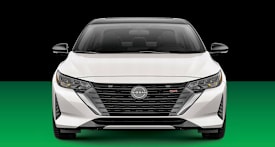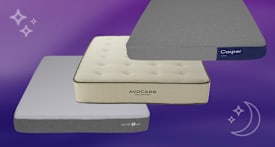At least eight people in the U.S. have died while using a rentable e-scooter since the fall of 2017, Consumer Reports has confirmed. And a recent CR nationally representative survey of more than 3,000 adults suggests that riders remain confused about what traffic laws they should follow.
As warmer weather arrives and e-scooters continue to flood city streets across the U.S., the findings could raise additional questions about how the two-wheeled devices—which can be quickly rented through a smartphone app—are regulated.
Earlier this year, a CR investigation—which tabulated injuries from 110 hospitals in 47 U.S. cities—found that at least 1,500 riders had been injured since e-scooters were introduced in late 2017, and there were four fatalities. Since then, CR has identified an additional four deaths.
In March a 53-year-old San Diego man riding without a helmet died when he lost control of his scooter and crashed into a tree. A month later, in Tulsa, Okla., a 5-year-old boy riding with his mother died when he fell off a scooter and was hit by a vehicle. And there were at least two deaths in May: a 20-year-old in Atlanta hit while riding his scooter after midnight, and a 26-year-old Nashville man on a scooter hit by an SUV. CR confirmed reports of the crashes through public records and interviews with law enforcement authorities.
The deaths highlight the potential dangers of the devices, particularly when misused. For example, two companies that make them, Bird and Lime, say that only one rider at a time should use a scooter, and they should never be used by people under age 18. The companies also emphasize the importance of wearing helmets.
Lime said in a statement that it's "committed" to working with regulators and the medical community to create a safe environment for riders. Bird told CR that cities need to modernize road infrastructure to protect scooter riders from cars.
"Safety is critically important at Lime, and every day we're innovating on technology, infrastructure, and education to set the standard for micromobility safety," Lime said.
But the deaths are prompting some cities to reconsider allowing e-scooters at all. For example, Nashville's mayor responded to the recent scooter death by asking city lawyers to draft legislation that would ban e-scooters. "Based upon what I have witnessed firsthand, the recent influx of scooters in our city is causing us to be less safe and more visually cluttered," Mayor David Briley wrote in a letter to scooter companies.
Part of the problem, experts say, is that roads and sidewalks aren't designed for the new transportation mode. For example, Kevin Fang, M.D., an assistant professor of geography, environment, and planning at Sonoma State University in California, notes that California state law requires e-scooters to be ridden on streets, but streets aren't prepared to accommodate them.
"While it certainly is understandable that e-scooter use may be undesirable on sidewalks in downtown San Francisco, throughout the state we have many wide, high-speed arterial roadways with no bicycle lanes, where forcing e-scooter riders to go is not desirable either," says Fang, who recently published a study on e-scooter policy for the Mineta Transportation Institute at San Jose State University.
According to CR's survey, conducted in March, 2019, 22 percent of people who have spent time in an area where they saw e-scooters available for rent said they had used one at least once. But many riders (27 percent) are uncertain of the traffic laws they should follow.
Among people who have ridden an e-scooter, 51 percent ride on the sidewalk, 26 percent in a bike lane, and 18 percent in the street but not in a bike lane. Additionally, more than one-quarter of users say that pedestrians got in the way during their ride, two in 10 say they felt unsafe around car traffic, and 8 percent reported a part of their scooter malfunctioned or didn't work properly.
"The last thing an e-scooter rider needs to worry about is a possible defect as they try to navigate potholes, cars, bikes, and other road users," says William Wallace, a safety policy advocate for CR.
In response to a Freedom of Information Act request, last week the Consumer Product Safety Commission provided CR with reports on 45 e-scooter crashes filed with the agency since late 2017. But the agency told CR in a letter that it has "not investigated the incidents, conducted, or obtained any evaluations of the products that corroborate the substance of the information contained in the complaints and reported incidents."
Wallace says that rental companies should "always make sure their e-scooters are in good working condition and are free of safety defects. If they don't, then safety regulators must take action to force them to live up to their responsibilities," he says.
Lawsuit Takes Aim at Road Design
The design of road infrastructure is a focal point in a lawsuit filed last week against Bird on behalf of a scooter rider injured in a crash.
The rider—identified in the complaint as M.B.—was using a Bird scooter in Los Angeles in June 2018 when a driver collided with him, causing "serious injuries." The intersection where the crash occurred was in a "dangerously defective condition," the lawsuit alleges, including design, construction, maintenance, and inadequate signage.
The suit names Bird as well as Los Angeles city, Los Angeles County, and California's department of transportation as defendants.
A spokesperson for the California transportation department said he was unable to comment, citing pending litigation. Los Angeles city and county spokespeople didn't respond to a request for comment.
Bird says it doesn't comment on pending litigation. But the company told CR that, while research of studies related to shared e-scooters has just started to be looked at, "what has immediately become clear is that 75 percent of the known fatalities with shared e-scooters were due to collisions with cars."
"We are proud supporters of the Vision Zero movement, calling upon cities everywhere to modernize road infrastructure to protect those who choose a more sustainable form of transportation from the dangers caused by cars," Bird said.
Fang, the Sonoma State professor, agrees that changes are needed to protect e-scooter users. "The proliferation of scooter use, and the potential conflicts with cars, points to the usefulness of more and better infrastructure for medium-speed users, such as protected bicycle lanes," he says. "Cities could prioritize such infrastructure as a matter of policy."
Fang also says that more research is needed to better understand how many people use the devices and how dangerous they are. While companies occasionaly release relevant data, getting a clear picture "can be difficult to peg downn," he says, in part because of multiple companies, evolving ridership, and the fact that some people own their own e-scooters.
Bird, in a safety report published in April, said the self-reported injury rate for e-scooters was similar to bicycling, at less than .01 percent. But a study of e-scooters in Portland, Ore., found the injury rate in that city to be 2.2 per 10,000 miles traveled and 2.5 per 10,000 e-scooter trips taken (.025 percent).
What Riders Can Do
Bird and Lime encourage scooter riders to wear helmets and say they have given tens of thousands of them to riders. But earlier studies have found helmet use to be closer to zero. CR's survey showed higher numbers, with about half of riders saying they wear a helmet at least some of the time while using an e-scooter. Fang says that could be attributed to more e-scooter rides becoming "planned."
"When they first appeared, riders may have seen them, thinking they'll give them a try, without having pre-planned to ride one," he says. "Now that people know scooters are available in cities, individuals may now know they are likely to ride one on a given day, and thus pre-plan to bring a helmet with them."
Some hospitals are finding victims in e-scooter crashes rarely have helmets on, however. Jay Doucet, M.D., chief of the trauma division at the University of California San Diego Health hospital, says that his facility has admitted more than 150 e-scooter-related major trauma victims since Jan. 1, 2018. Just 2 percent of victims he treated for injuries were wearing helmets when they crashed, Doucet tells CR.
"Always wear a helmet," he recommends.
Lime also says that scooter riders should conduct visual inspections of scooters before taking a ride, and check to make sure brakes are working properly before taking off.
Scooter Safety 101
Scooters are an affordable—and fun—means of transportation, but there are some important things you need to know. On the "Consumer 101" TV show, Consumer Reports expert Ryan Felton offers tips for keeping safe while using a scooter.















